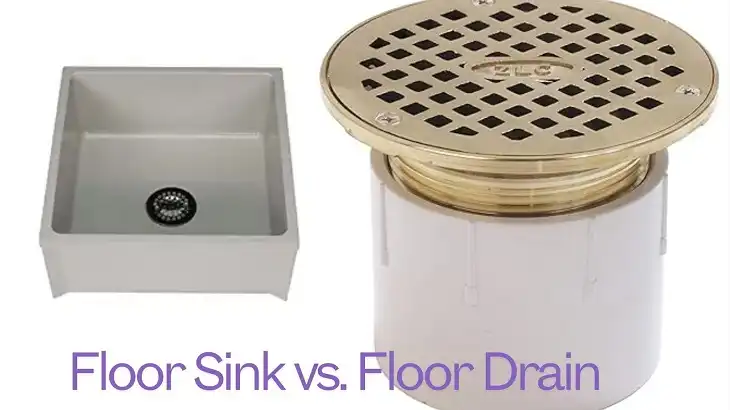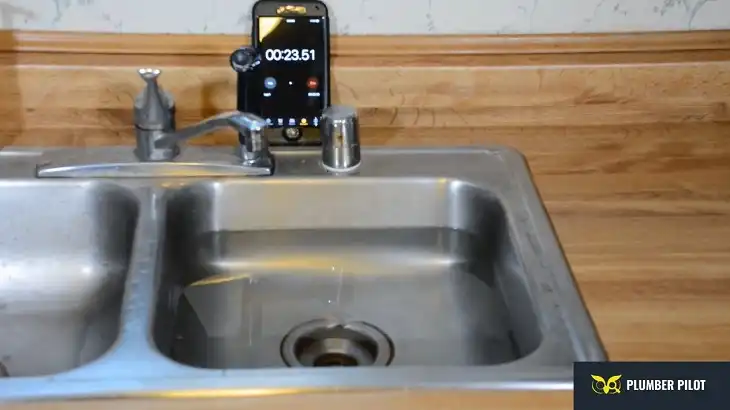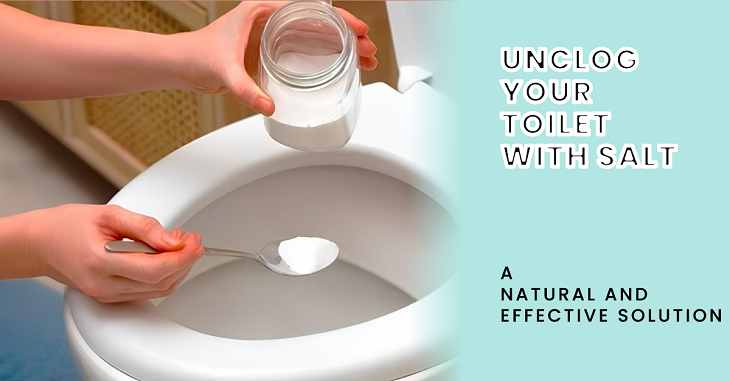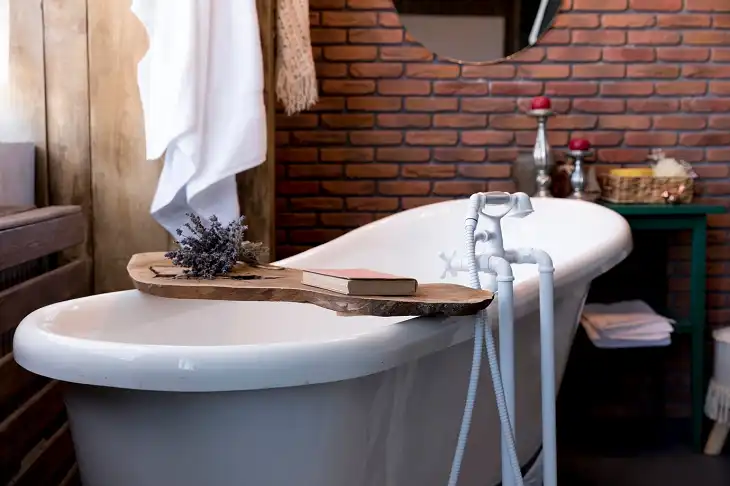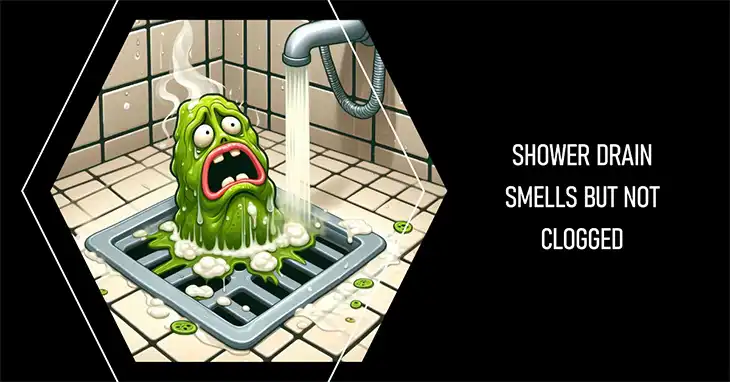Shower Drain Smells Like Mildew: Causes and Solutions
Have you recently stepped into your bathroom and wrinkled your nose at an unpleasant, musty odor? If that smell is coming from your shower drain and reminds you of damp, old towels, you’re likely dealing with a mildew problem.
That musty smell wafting up from your shower drain isn’t just an annoyance – it’s a sign that something’s not right in your plumbing.
Mildew, a type of fungus, thrives in damp, dark environments, making your shower drain the perfect breeding ground.
A shower drain that smells like mildew can turn your refreshing shower experience into an unpleasant one, and it’s an issue that shouldn’t be ignored.
This fungal growth not only produces an unpleasant odor but can also indicate more serious underlying issues in your bathroom’s plumbing system.
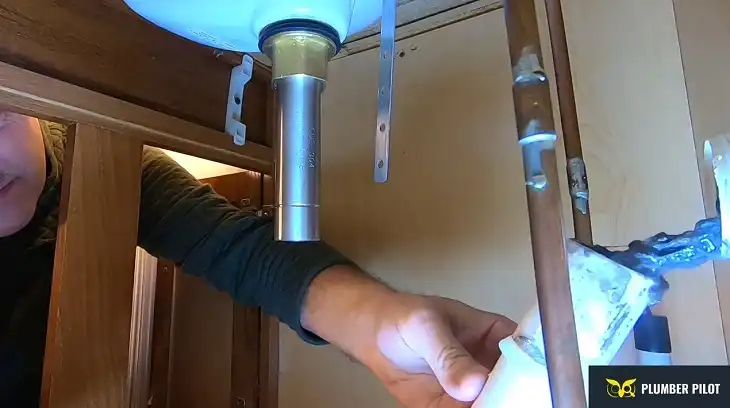
Why You Shouldn’t Ignore That Musty Smell
While it might be tempting to mask the odor with air fresheners or just try to ignore it, addressing a mildew smell in your shower drain promptly is crucial. Here’s why:
- Mildew and its close cousin, mold, can trigger allergies and respiratory issues, especially in sensitive individuals.
- The smell could be a sign of clogs or other plumbing issues that, if left unchecked, could lead to more serious and costly repairs.
- Mildew can spread to other areas of your bathroom, creating a larger problem to deal with later.
- No one wants their bathroom to smell musty – it can affect your overall comfort in your home.
Causes of Mildew Smell in Shower Drains
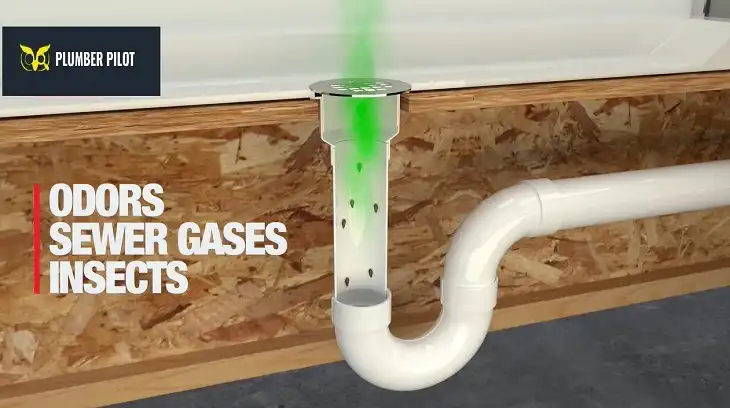
Understanding what’s causing that musty odor is the first step in effectively eliminating it. Here are the main culprits behind a mildew-smelling shower drain:
1. Mold Growth
Mold, mildew’s more notorious cousin, loves damp, dark places – and your shower drain fits the bill perfectly. When water doesn’t drain completely or evaporate quickly enough, it creates the ideal conditions for mold to thrive.
As mold colonies grow, they release spores and gases that produce that characteristic musty smell.
2. Biofilm Buildup
Biofilm is a slimy layer of various microorganisms that can form inside your pipes. It’s made up of bacteria, fungi, and other microbes that stick together and adhere to surfaces.
As biofilm accumulates in your shower drain, it can start to emit a mildew-like odor. This buildup is particularly common in drains that aren’t cleaned regularly.
3. Clogged Drain
A clogged shower drain can be a major contributor to mildew smells. When hair, soap scum, and other debris accumulate in the drain, they create a dam that traps water.
This standing water becomes a perfect environment for mildew and other microorganisms to grow. As these substances decompose, they can produce a strong, musty odor.
4. Humid Bathroom Environment
Your bathroom’s overall humidity levels play a significant role in mildew growth.
Poor ventilation and high humidity create a moisture-rich environment that encourages mildew and mold growth not just in your drain, but throughout your bathroom.
This can exacerbate existing mildew problems in your shower drain and make the smell more noticeable.
Identifying the Source of the Mildew Smell
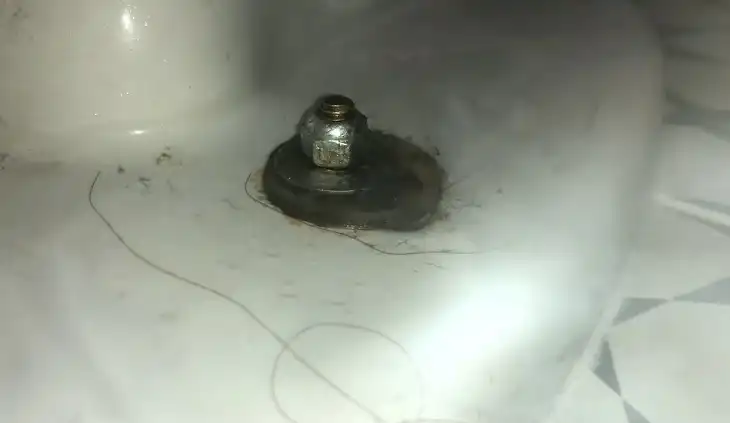
Before you can effectively tackle that unpleasant odor coming from your shower drain, it’s important to confirm that what you’re smelling is indeed mildew. Let’s explore how to pinpoint the source and nature of the smell.
1. Distinguishing Mildew Odor from Other Drain Smells
Mildew has a distinct odor that sets it apart from other common drain smells:
- Mildew smell: Musty, damp, and reminiscent of wet cardboard or old books
- Sewage smell: Rotten eggs or sulfur-like odor (indicates a possible plumbing issue)
- Rotten food smell: Pungent and decaying (might be from trapped organic matter)
If you’re detecting a musty, earthy scent, it’s likely mildew you’re dealing with. However, if the smell is more sulfurous or rotten, you might have a different plumbing problem on your hands.
2. Checking for Visible Signs of Mold or Biofilm
While the smell is a good indicator, visual inspection can confirm the presence of mildew or its close relatives:
- Remove the drain cover: Carefully take off the shower drain cover to peek inside.
- Look for discoloration: Mold and mildew often appear as black, green, or brown spots.
- Check for slime: A slimy residue around or inside the drain could indicate biofilm buildup.
- Inspect the drain pipe: Use a flashlight to look deeper into the drain for any visible growth.
Remember, not all mold or biofilm may be immediately visible, as it can grow deep within the pipes. However, any visible signs confirm that action is needed.
3. Health Risks Associated with Mildew in Shower Drains
While a mildew smell is unpleasant, it’s more than just an olfactory nuisance. Exposure to mildew and mold can pose several health risks, especially with prolonged exposure.
Respiratory Issues
Mildew and mold spores can become airborne, especially in the steam-filled environment of a bathroom. When inhaled, these spores can cause or exacerbate respiratory problems:
- Coughing and wheezing
- Throat irritation
- Nasal congestion
- Worsening of asthma symptoms
Allergic Reactions
For many people, mold and mildew can trigger allergic responses:
- Sneezing
- Runny or stuffy nose
- Red, itchy eyes
- Skin rashes or hives
These symptoms can be particularly troublesome for those with existing allergies or sensitivities.
Other Potential Health Concerns
While less common, prolonged exposure to mold and mildew can lead to other health issues:
- Headaches
- Fatigue
- Difficulty concentrating
- In rare cases, more serious fungal infections (particularly in immunocompromised individuals)
It’s important to note that while not all molds are toxic, any mold growth in your home should be addressed promptly to maintain a healthy living environment.
DIY Solutions for Eliminating Mildew Smell From Shower Drain
Now that we’ve identified the problem and understood its potential health impacts, let’s roll up our sleeves and tackle that mildew smell. Here are some effective DIY methods to clean your shower drain and eliminate the odor:
Cleaning with Baking Soda and Vinegar
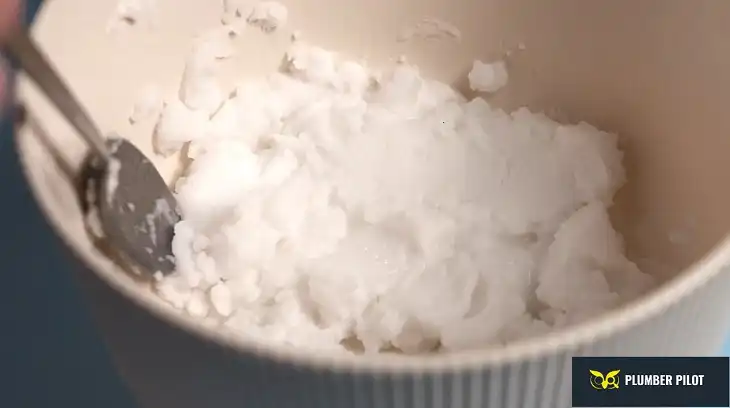
This classic combination is a powerful, natural way to clean and deodorize your drain:
- Pour 1/2 cup of baking soda down the drain.
- Follow with 1 cup of white vinegar.
- Cover the drain and let the mixture fizz for 15 minutes.
- Flush with hot water.
This method helps break down biofilm and neutralize odors.
Using a Drain Brush or Snake
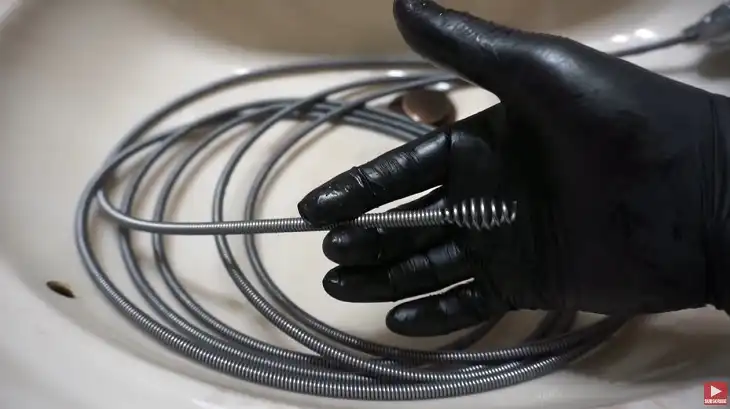
For more stubborn buildup:
- Insert a drain brush or snake into the drain.
- Twist and push to scrub the inside of the pipe.
- Pull out any debris you’ve loosened.
- Flush with hot water.
This physical cleaning can remove mildew-causing buildup that chemical cleaners might miss.
Hot Water Flush Method
Sometimes, a good flush is all you need:
- Boil a large pot of water.
- Carefully pour it directly down the drain.
- Repeat if necessary.
The heat and force of the water can dislodge buildup and kill mildew.
Natural Enzymatic Cleaners
Enzymatic cleaners use beneficial bacteria to break down organic matter:
- Choose a natural, drain-safe enzymatic cleaner.
- Follow the product instructions for application.
- Allow the cleaner to sit in the drain as directed.
- Flush with water.
These cleaners are particularly effective for breaking down the biofilm that harbors mildew.
Preventing Mildew Smell in Shower Drains
While tackling an existing mildew smell is crucial, preventing it from returning is equally important. Here are some proactive measures to keep your shower drain fresh and odor-free:
Regular Cleaning and Maintenance
Consistent upkeep can significantly reduce the likelihood of mildew growth.
- Weekly Cleaning: Make it a habit to clean your shower and drain at least once a week. Use a mild bathroom cleaner or a mixture of baking soda and vinegar to scrub the drain area.
- Monthly Deep Clean: Perform a deeper clean once a month. This can include using a drain brush to remove buildup and flushing the drain with boiling water.
- Drain Maintenance Products: Consider using commercial drain maintenance products that prevent biofilm and buildup without causing harm to your pipes.
Improving Bathroom Ventilation
Proper ventilation is key to reducing moisture levels.
- Use an Exhaust Fan: Install a good-quality exhaust fan and run it during and after showers to expel humid air.
- Open Windows: If possible, open a window to allow fresh air to circulate.
- Dehumidifier: In particularly humid climates, using a dehumidifier can help maintain a dry bathroom environment.
Using a Drain Cover or Hair Catcher
Preventing debris from entering your drain can reduce the risk of clogs and biofilm.
- Install a Drain Cover: Use a drain cover or hair catcher to trap hair and larger particles.
- Regular Cleaning: Clean the cover or hair catcher frequently to prevent buildup.
Keeping the Bathroom Dry
Minimize excess moisture to deter mildew growth.
- Wipe Down Surfaces: After each shower, use a squeegee or towel to wipe down the shower walls and floor.
- Fix Leaks Promptly: Address any leaks in faucets, showerheads, or pipes immediately to prevent water accumulation.
When to Call a Professional Plumber
While DIY methods can often resolve mildew smells, there are times when professional help is necessary.
Persistent Mildew Smell Despite DIY Efforts
If you’ve tried the DIY solutions and the mildew smell persists, it might indicate a deeper issue.
- Hidden Mold: Mold could grow in areas that are not accessible through simple cleaning.
- Plumbing Problems: Persistent odors might point to underlying plumbing issues that require professional inspection and repair.
Signs of More Serious Plumbing Issues
Certain symptoms suggest it’s time to call a plumber.
- Sewage Smell: A sulfur-like or rotten egg smell could indicate a sewer line problem.
- Slow Draining: Consistently slow drainage can be a sign of a significant blockage or pipe damage.
- Frequent Clogs: Regular clogs despite routine cleaning may require professional intervention.
Conclusion
To maintain a fresh and odor-free shower drain, it’s essential to understand the causes of mildew smells and address them promptly.
Regular cleaning, proper ventilation, and preventative measures can significantly reduce the risk of mildew buildup.
Keeping your shower drain clean and free from mildew not only enhances your bathroom’s environment but also contributes to a healthier home.
By taking proactive steps and knowing when to seek professional help, you can ensure a pleasant and hygienic showering experience.

